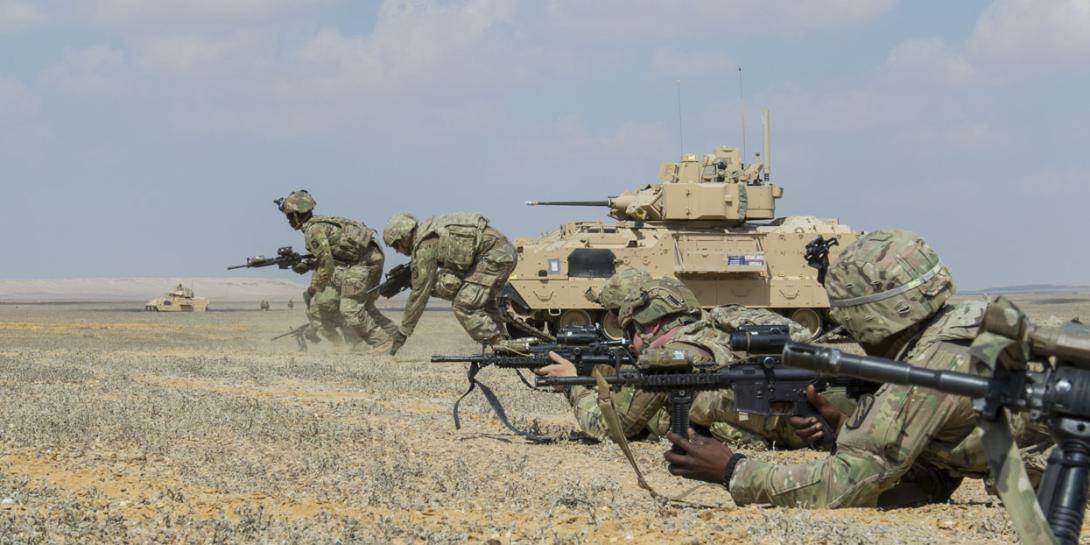Army Expands Mission of Cyber Directorate
The U.S. Army its transforming its Department of the Army’s Management Office-Cyber (DAMO-CY) to include a wider range of joint all-domain operations capabilities.
Col. Jay Chapman, USA, division chief, Mission Command, in the Army CIO/G-6 office, revealed the change at a February 13 luncheon event in Arlington, Virginia, hosted by the AFCEA Washington, D.C. chapter.
“Just in the last two weeks, a directorate that was called DAMO-Cyber, DAMO-CY, was repurposed as DAMO-SO—strategic operations. He has cyber, EW [electronic warfare], SIGINT [signals intelligence], mission command, fires and space all under his directorate,” Col. Chapman said. He added that the move puts one general officer in charge of the full range of joint all-domain operations to “help synergize solutions.”
The DAMO-SO is led by Brig. Gen. Martin Klein, USAR. According to his LinkedIn profile, Gen. Klein also has served as a vice president with ECS, a technology company located in Fairfax, Virginia.
Col. Elizabeth Casely, USA, chief of staff, Network Cross Functional Team, Army Futures Command, said during the AFCEA panel session that the focus is on getting “useful data to the warfighter at the speed that they need it,” so that they can make decisions more quickly. “We’re looking at big data. We’re looking at how to convert data, how to get that data to any sensor, any shooter, through any [command and control] node. This is quickly becoming a joint conversation. It is a joint conversation,” she said.
She added that instead of each of the services building solutions and then trying to make them interoperable, leaders from the various services are starting to discuss system requirements and interoperability much earlier.
At a series of recent events Army officials have touted the importance of cloud computing and big data. The service, for example, has created an Enterprise Cloud Management Office led by Paul Puckett. The office is a centralized, dedicated enterprise cloud migration resource for Army data and application owners. It supports building cloud environments, architecture, contracting, resourcing, cloud and data migrations, cybersecurity, business case analysis and industry best practices and is designed to enhance speed, effectiveness and efficiency of migrations to a cloud hosting environment, according to an Army announcement released in November.
Noting the importance of intelligence, information, cyber, electronic warfare and space (I2CEWS) capabilities, Col. Chapman also suggested that brigade combat teams may not be the primary focus for resources in the future. “Brigade combat teams are what we funded first all the time. Now, we’re looking to reach the enemy a lot farther out than direct fire weapons,” he said, adding that hypersonics, long-range missiles and non-kinetic capabilities are gaining importance under the new defense strategy. “It’s not just about boots on the ground. We don’t even have to get to that point. We may start to see that change in our resourcing.”
Another panelist, Col. Christian Haffey, USA, division chief, Mission Command (FDC) in the office of the Army G-8, noted that the service in 2018 killed or rolled back more than 100 programs to free up billions of dollars for modernization. “They did that again last year. The findings weren’t as deep as you would expect because they cut so much of the meat already the first time,” Col. Haffey stated. “But we’re at that process again, and it’s getting tougher and tougher because now we’re getting closer and closer to the bone.”
Indeed, during budget briefings earlier in the week, Army officials said they will shift $2.4 billion by killing or reducing multiple programs. They followed that up with a partial list of 10 programs being eliminated and 10 being reduced. Those 20 programs will result in more than $1.13 billion in savings.
Programs being eliminated include the Advanced Precision Kill Weapon System, the Mobile Intermediate Range Missile System and the Guided Multiple Launch Rocket System Service Life Extension Program. The service is reducing funding for the Bradley, Joint Light Tactical Vehicle, Prophet signals intelligence vehicle and the Distributed Common Ground Sensor-Army, among others.
If a system doesn’t contribute to the Army’s modernization plans, it may be in danger, Col. Haffey indicated.
You may also enjoy:
U. S. Army Sets Aside Money for Joint All-Domain Operations





Comments